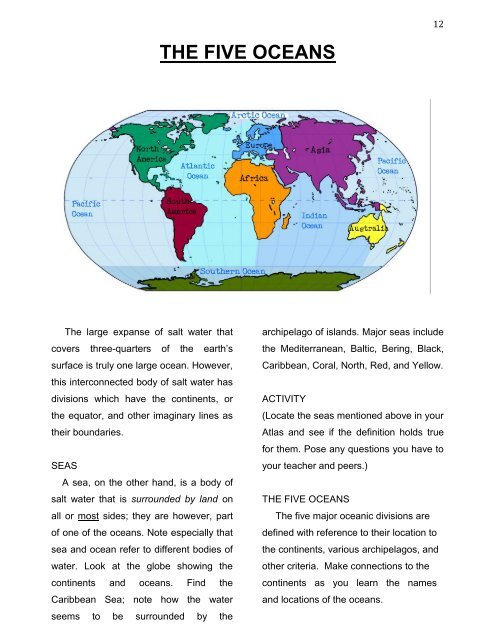A SENSE OF PLACE Upper Primary 4..5
You also want an ePaper? Increase the reach of your titles
YUMPU automatically turns print PDFs into web optimized ePapers that Google loves.
12<br />
THE FIVE OCEANS<br />
The large expanse of salt water that<br />
covers three-quarters of the earth’s<br />
surface is truly one large ocean. However,<br />
this interconnected body of salt water has<br />
divisions which have the continents, or<br />
the equator, and other imaginary lines as<br />
their boundaries.<br />
SEAS<br />
A sea, on the other hand, is a body of<br />
salt water that is surrounded by land on<br />
all or most sides; they are however, part<br />
of one of the oceans. Note especially that<br />
sea and ocean refer to different bodies of<br />
water. Look at the globe showing the<br />
continents and oceans. Find the<br />
Caribbean Sea; note how the water<br />
seems to be surrounded by the<br />
archipelago of islands. Major seas include<br />
the Mediterranean, Baltic, Bering, Black,<br />
Caribbean, Coral, North, Red, and Yellow.<br />
ACTIVITY<br />
(Locate the seas mentioned above in your<br />
Atlas and see if the definition holds true<br />
for them. Pose any questions you have to<br />
your teacher and peers.)<br />
THE FIVE OCEANS<br />
The five major oceanic divisions are<br />
defined with reference to their location to<br />
the continents, various archipelagos, and<br />
other criteria. Make connections to the<br />
continents as you learn the names<br />
and locations of the oceans.



